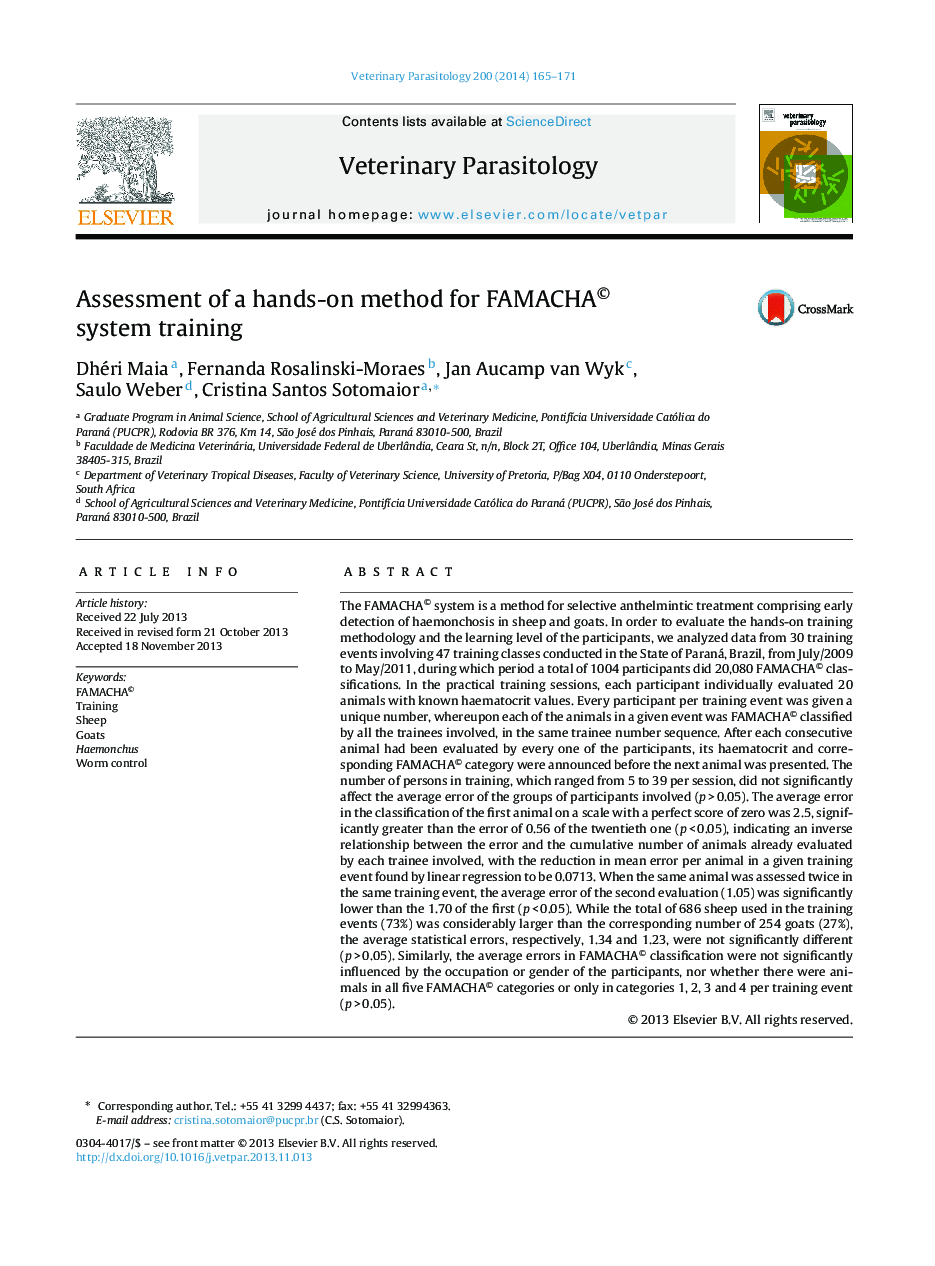| Article ID | Journal | Published Year | Pages | File Type |
|---|---|---|---|---|
| 5803538 | Veterinary Parasitology | 2014 | 7 Pages |
The FAMACHA© system is a method for selective anthelmintic treatment comprising early detection of haemonchosis in sheep and goats. In order to evaluate the hands-on training methodology and the learning level of the participants, we analyzed data from 30 training events involving 47 training classes conducted in the State of Paraná, Brazil, from July/2009 to May/2011, during which period a total of 1004 participants did 20,080 FAMACHA© classifications. In the practical training sessions, each participant individually evaluated 20 animals with known haematocrit values. Every participant per training event was given a unique number, whereupon each of the animals in a given event was FAMACHA© classified by all the trainees involved, in the same trainee number sequence. After each consecutive animal had been evaluated by every one of the participants, its haematocrit and corresponding FAMACHA© category were announced before the next animal was presented. The number of persons in training, which ranged from 5 to 39 per session, did not significantly affect the average error of the groups of participants involved (p > 0.05). The average error in the classification of the first animal on a scale with a perfect score of zero was 2.5, significantly greater than the error of 0.56 of the twentieth one (p < 0.05), indicating an inverse relationship between the error and the cumulative number of animals already evaluated by each trainee involved, with the reduction in mean error per animal in a given training event found by linear regression to be 0.0713. When the same animal was assessed twice in the same training event, the average error of the second evaluation (1.05) was significantly lower than the 1.70 of the first (p < 0.05). While the total of 686 sheep used in the training events (73%) was considerably larger than the corresponding number of 254 goats (27%), the average statistical errors, respectively, 1.34 and 1.23, were not significantly different (p > 0.05). Similarly, the average errors in FAMACHA© classification were not significantly influenced by the occupation or gender of the participants, nor whether there were animals in all five FAMACHA© categories or only in categories 1, 2, 3 and 4 per training event (p > 0.05).
